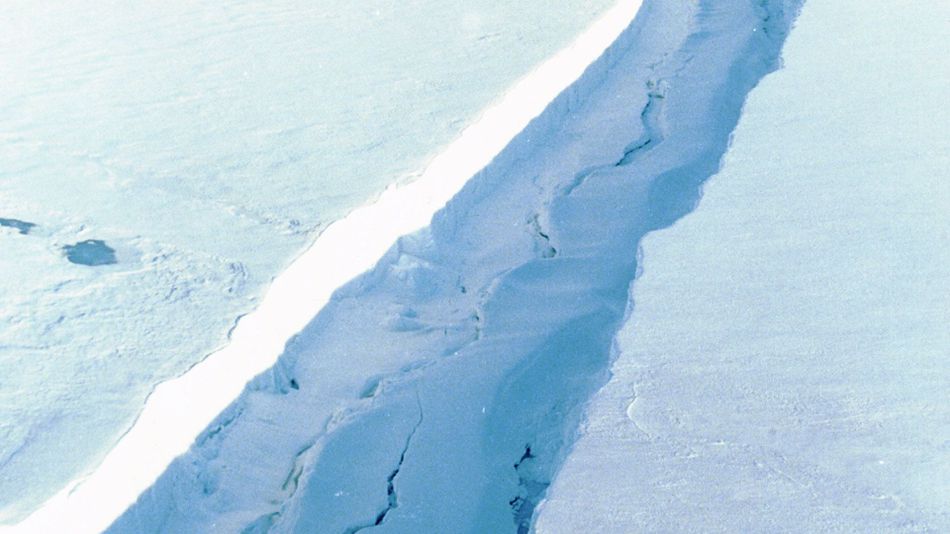
Crack in Larsen C Ice Shelf Is Moving Ahead And Has Expanded Extra 10km since 1st January
Back in December last year, a team of scientists from NASA managed to photograph the massive crack in the Larsen C Ice Shelf. Under the IceBridge mission, NASA’s scientists clicked an oblique view of a huge fissure in the Larsen C ice shelf of Antarctic Peninsula and since then, the site was under surveillance. However, since 1st January, this year, the rift has grown up 6 miles more, warned the researchers in the new research paper.
Recently, EU’s Sentinel-1 satellite system has transmitted the news of lengthening crack in the ice shelf. The 350m-thick floating ice shelf – Larsen C is located on the eastern side of the Antarctic Peninsula. According to the latest survey, done by the researchers at Swansea and Aberystwyth universities, and the British Antarctic Survey, if the rift is moving ahead at this pace, then soon it will be one of the largest icebergs ever recorded.
As per the reports published by the British scientists on Thursday, the crack in one of Antarctica’s largest ice shelves, which is more than 100 miles long is getting ahead and has grown another 6 miles in less than two weeks this month. EU’s Sentinel-1 satellite system, consisting two spacecraft, has been orbiting and monitoring the Larsen C continually since its discovery in December. As the radar sensors of the Sentinel-1 satellite system is capable of seeing through the cloud, it successfully managed to click the oblique view of lengthening cracks of Larsen, said one of the associated researchers of the project.
The data transmitted by the satellite system indicates that the rift is now pulling out for some 195km. But to guess, how much time it will take to break the 5,000 sq km block final is quite difficult, says Prof Adrian Luckman, the lead investigator of the study from Swansea. The rift tip has recently gotten into a new softer ice zone, which is expected to slow down its movement. However, it is still difficult to imagine when it will break because the rifting process is extremely complicated.
If it gets going with such a speed, then soon, the break off of an around a Delaware-size piece of ice will happen, which will be one of the biggest ice breaks recorded ever.


